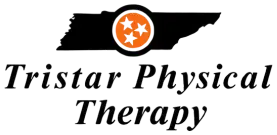Pain management is a challenging task, particularly when it is chronic. Luckily, occupational therapy and dry needling can work wonders together in alleviating pain. Occupational therapy is a branch of healthcare that focuses on supporting people in performing daily activities, while dry needling is a treatment technique for muscle pain. Together, they can make a powerful duo for pain relief.
The Benefits of Occupational Therapy for Pain Management
Occupational therapy has many benefits when it comes to pain management. This type of therapy aims to improve the patient’s quality of life by helping them engage in daily activities that may have been affected by pain. It also enhances their physical functioning and emotional well-being.
Occupational therapy includes a wide range of treatments, such as exercise, manual therapy, and patient education. The therapist will work with the patient to create a personalized plan that suits their specific needs. They will also provide guidance on how to manage pain, reduce stress, and improve sleep quality. Occupational therapy is effective in treating a variety of pain conditions, such as arthritis, fibromyalgia, and chronic back pain.
How Dry Needling Can Enhance Occupational Therapy for Pain Relief
Dry needling is a treatment technique that involves inserting needles into trigger points, which are knots of muscle that cause pain and discomfort. It is different from traditional acupuncture, as it focuses on the muscles rather than the energy flow in the body. Dry needling is a safe and effective way to treat muscle pain, and it can be used alongside occupational therapy to enhance pain relief.
When combined with occupational therapy, dry needling can improve the patient’s range of motion, decrease muscle tension, and promote healing. It can also help with pain reduction and improve overall physical functioning. The therapist will use the needles to target specific areas of the body that are causing pain, and the patient will experience a deep sensation as the needle is inserted. The treatment is usually quick, and the patient can resume their daily activities shortly afterward.
In conclusion, occupational therapy and dry needling are a powerful duo for pain management. Occupational therapy provides many benefits, such as improving physical functioning and emotional well-being, while dry needling enhances pain relief by targeting specific areas of the body. Together, they can help patients achieve a better quality of life and manage their pain more effectively. If you are experiencing chronic pain, talk to your healthcare provider about incorporating occupational therapy and dry needling into your treatment plan.

